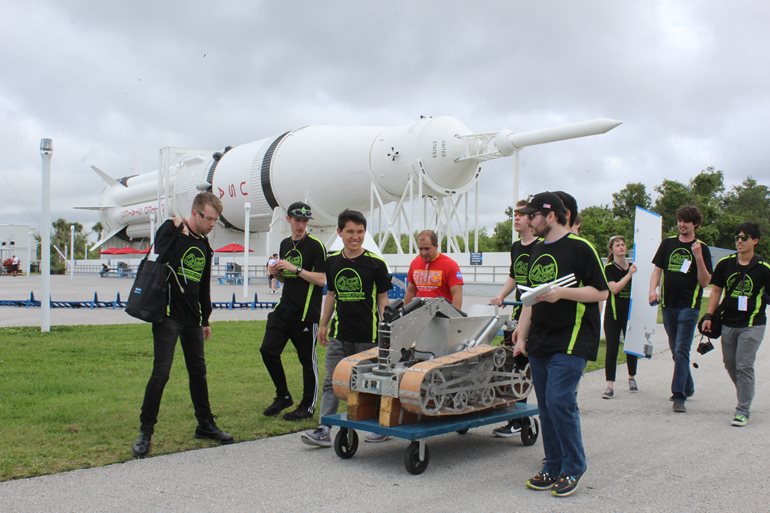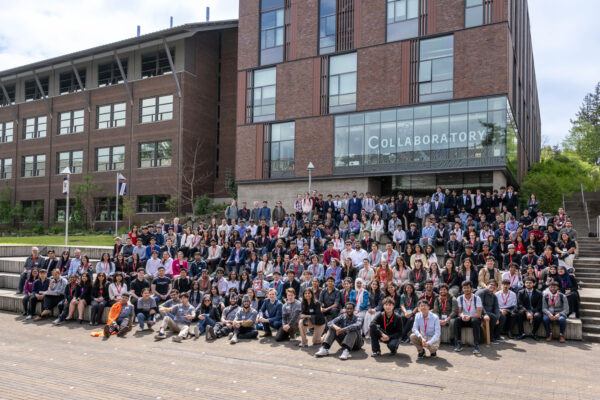10/10/2019

By Douglas Esser
Trickfire Robotics, the University of Washington Bothell robotics club, is shooting for the moon.
For the fourth year in a row, the club is one of 50 teams from universities across the country competing in a NASA off-world robotic mining competition. Called Lunabotics this year, it will be held in May at the Kennedy Space Center in Florida. Trickfire has already started work on its robot.
Building off all their efforts in the past, students are making significant changes and confronting new challenges.
Instead of Mars, now the would-be destination is the moon. The robot is smaller than previous models. And it will be autonomous, rather than remote controlled.
“This year we have some really high hopes for what we’ll be able to achieve,” said Carla Colaianne¸ the software lead who has been with the club for a year and a half. A 2019 graduate in Computer Science & Software Engineering (CSSE), she’s now a CSSE graduate student.
Moon to Mars trajectory
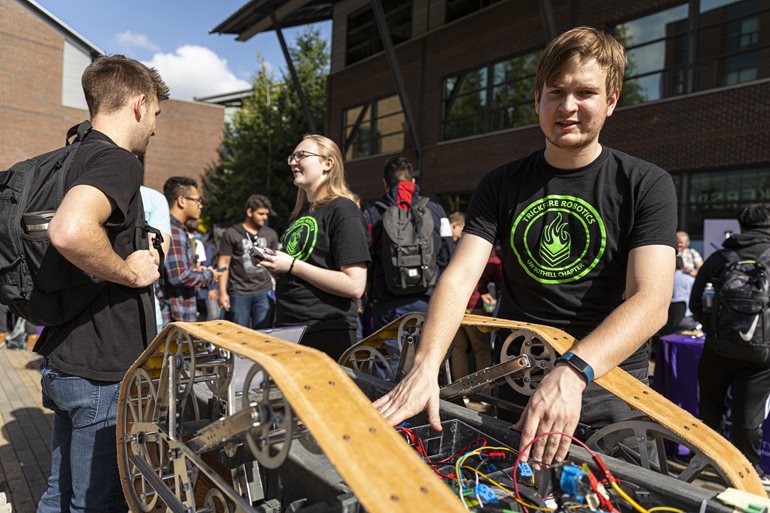
NASA revised the competition to support the Artemis lunar exploration program. It aims to land the first woman and the next man on the moon by 2024 as part of a longer-range plan to reach Mars.
The Lunabotics challenge is to design, build and operate a mining robot for the moon. The robot can be no more than 1 meter long, a half-meter wide and a half-meter tall. It can weigh no more than 60 kilograms or 132 pounds.
At the competition, the robot will have 15 minutes to navigate through dusty, simulated lunar soil, dig down 45 centimeters and gather at least a kilogram of gravel. The gravel represents ice crystals. NASA is looking for water on the moon.
“This year we’re pretty confident we’re going to be able to get a kilogram,” Colaianne said. “It seems like a small amount but getting through the soil is really hard.”
The competition
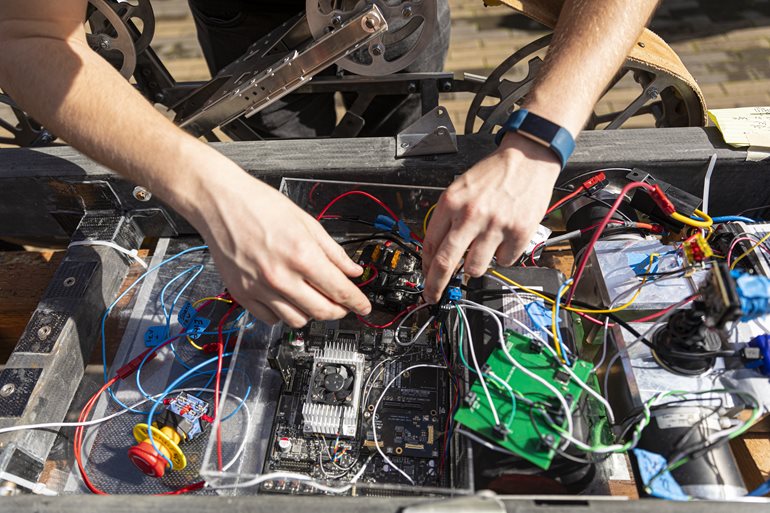
One of the challenging complications for the competition is the crushed lava basalt used to simulate the surface of the moon. It’s alkaline, which may cause skin and eye irritation, and it contains a small percentage of crystallin silica, which is a respiratory hazard. That means members of the team who set up the robot have to wear protective “moon suits” with masks or respirators.
The competition field, 5.5-by-3 meters, is divided in three sections: start, obstacles and dig. The robot is pointed in a random direction to start. To navigate, the robot’s computer vision will use lidar, equipment similar to radar that measures reflected laser light.
“We have to figure out where we are and how to navigate the obstacle field of craters and rocks. Once we reach the side of the field where we dig, we can do our mining. Then we have to navigate back through the obstacle field and deposit in the bin that’s at the starting zone,” Colaianne said.
NASA assigns points and presents awards for performance at various stages. In addition, the federal agency requires teams to present a paper on engineering methodology and to perform public outreach targeting underserved K-12 students in their communities. NASA also evaluates the robots for innovations that may be applied to an actual device going to the moon.
Building engineers
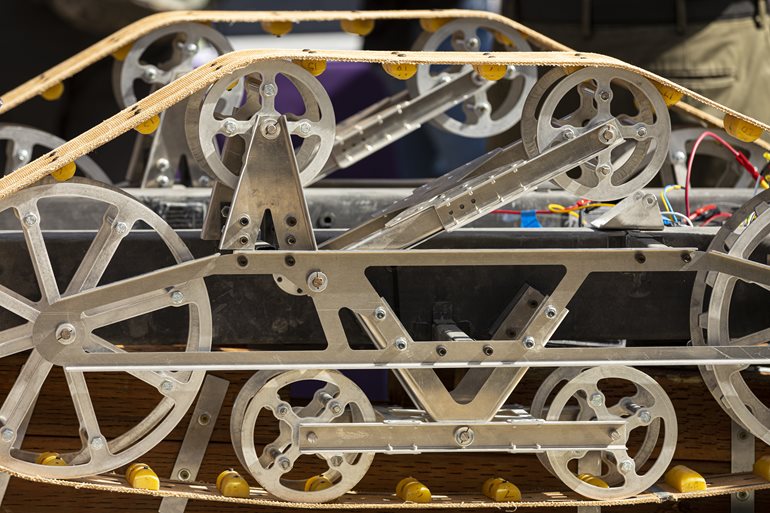
Another objective for NASA is to help train engineers with valuable tech skills, a career-building goal shared by Trickfire.
The club’s financial director last year, Michael Vaschillo, graduated in June with a computer science degree and now works at T-Mobile. Still supporting Trickfire as a mentor, Vaschillo said his experience helped him land his position — not only because of robotics but also the finance and business aspects of the club.
“Often students coming out only have their classes to rely on. Having a 4.0 is awesome, but real-life experience is really lacking for a lot of students,” he said.
Pongpak Techagumthorn, a Physics major graduating in ’21, is expanding his engineering skills by working on fabrication. “I’m getting a lot of experience with mechanical engineering, even though I’m not in the Mechanical Engineering program,” he said.
Students can also make valuable contacts with the club’s sponsors, who provide equipment and financial support. They are in a position to recruit promising students with hands-on experience in skill areas such as autonomous driving.
Organization, accomplishments
Brad Halter, a Mathematics major graduating next spring, is the technical director “keeping everyone on schedule.” This is his third year with the team.
He made the two previous trips to Florida and says he sees a lot of improvement this year.
“The major thing that has progressed is how organized the team has been,” Halter said. ”This year we’re hoping to make it so everyone is always where they need to be.”
Trickfire has 30 to 40 members who participate, depending on their course load. Teams assigned to various tasks meet once a week and review what needs to be done.
“None of us are experts in any of this,” Colaianne said, “but when you put five or six of us together, it’s incredible what we can accomplish.”
